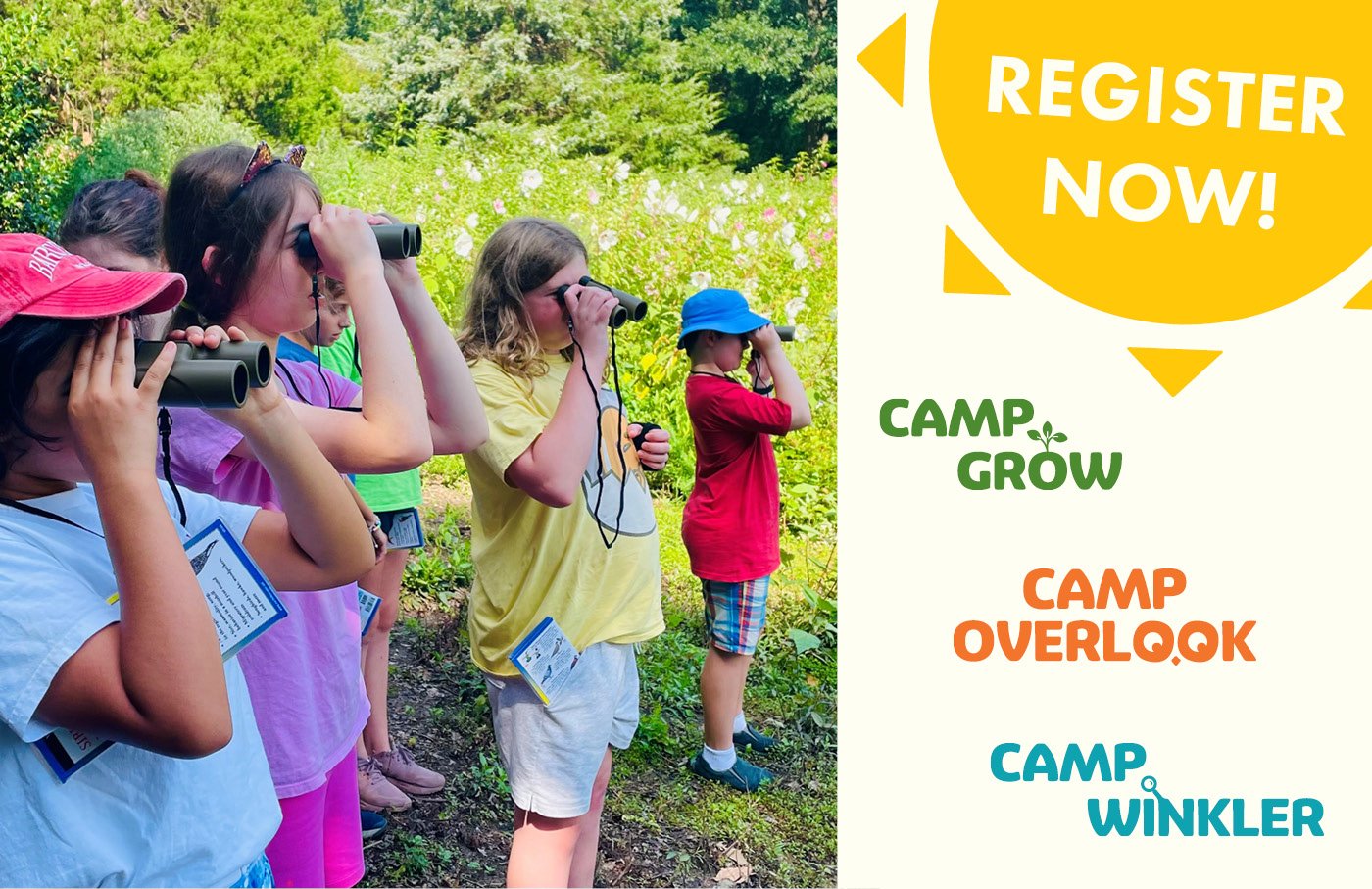Collections
Meadowlark is the hose to numerous plant collections.Meadowlark is host to numerous plant collections. Plant collections are hyper-specific plant selections that are used to promote or educate the public on a diverse species or genus.

- Meadowlark created three distinct native plant collections to support the International Agenda for Botanic Gardens in Conservation. The largest of these is the Potomac Valley Collection (PVC). PVC development is based on biogeography and floristic composition within the Potomac River basin.
- Virginia is topographically and floristically diverse. The Appalachian Mountains in the southwest region of the state reach elevations of 1600 meters. Many other peaks in the west are more than 1200 meters high.
- West to east the state traverses six distinct geographic regions. These include the Appalachian Highlands, Valley and Ridge, Shenandoah Valley, Blue Ridge, Piedmont, and Coastal Plain. The Coastal Plain embodies much of the Chesapeake Bay and reaches the Atlantic Ocean further east. The entire state is located between 40’ & 36‘ North and 74’ & 83’ West. In Takhtajan’s Floristic Regions of the World, Virginia occupies the Appalachian Province and the northern tip of the Atlantic and Gulf Coast Plain Province. Virginia is a state where bromeliads reach their most northerly distribution, cacti adorn beach dunes, endemic birches are found and northern spruce forests dominate the highest mountains. It is also a state in need of both in situ and ex situ conservation. A principal goal of these collections is to educate the public about the connection between garden conservation collections and saving plants in the wild.
- View a summary of native plants cultivated in the Potomac Valley Collection between 1999 and 2019. The plants were verified in coordination with the Ted Bradley Herbarium at George Mason University and can be found at: This Project was funded by The Volgenau Foundation.
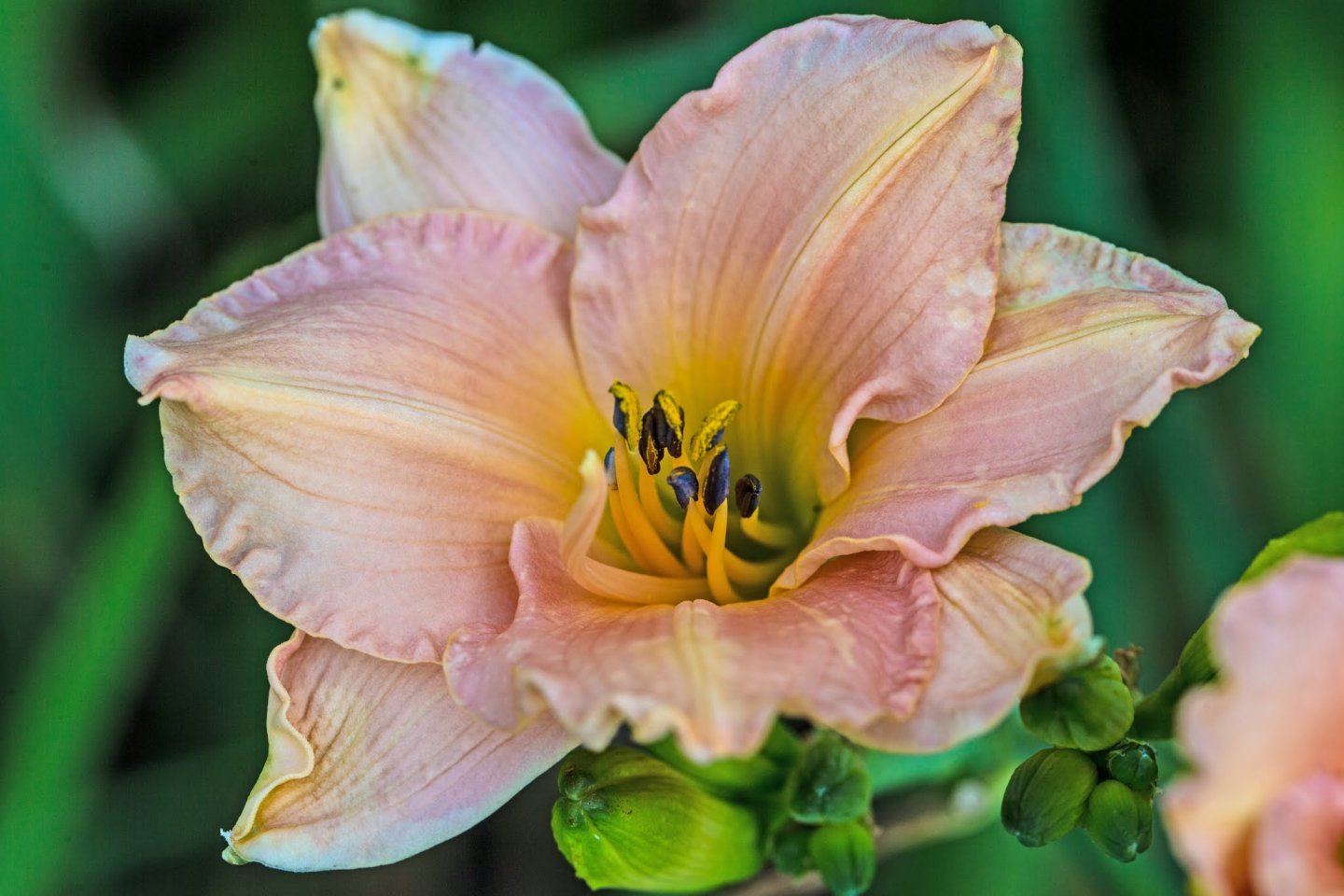
- The Hemerocallis (daylily) collection preserves and displays a comprehensive reference collection of daylilies with an emphasis on Stout Silver Medal winners, Lenington All-American winners, and notable historic reference including American Daylily Society (ADS) Region 3 cultivars.
- Meadowlark Botanical Gardens, a member of the ADS, showcases, preserves, contributes, and distributes plant specimens to botanical gardens, arboreta, scientists performing research on topics relevant to Hemerocallis, and other industry professionals. The acquisition of both new cultivars and award-winning cultivars are critical in preserving the genetic profile related to Hemerocallis. The genus Hemerocallis is extremely diverse, exhibiting color combinations unique to the genus and is popular worldwide as an ornamental, medicinal, and edible plant. The ability to thrive in a wide range of environmental conditions, as well as their expansive morphological diversity, makes Hemerocallis a highly desirable plant for the horticulture community. Not only are daylilies a staple in gardens worldwide, but they could be an important scientific resource; the genus has been studied extensively for its biomedical potential, as well as its edibility as a food crop historically used in its native range of China, Japan, and Korea.
- In the early days of Meadowlark, Tony Welsbacher, then president of the Potomac Hosta Club, and Pat Cochenour, daylily hybridizer, were among the volunteers who were impactful in the development of the Daylily Collection. Tony worked with the NOVA Parks Landscape Division Superintendent, Jim Turner, to expand the daylily collection from three to eight beds, including one that features all the Stout Silver Medal winners. Tony and Jim, along with local collectors like Adrienne Whyte, donated daylilies from their own gardens. In 1995, the Northern Virginia Daylily Society (NVDS) was formed. Tony, Adrienne, and Pat, among the original members, made sure the NVDS provided funding and volunteer support for our Daylily Collection’s upkeep and expansion. The NVDS continues to assist Meadowlark staff with educational information and programing, in addition to donating the annual Stout Silver Medal winning daylily. They have sponsored Meadowlark as an ADS display garden since 2007.
- Through the years, Pat Cochenour worked with Meadowlark horticulturist Doris Rodriguez on upkeeping the daylilies. The beds have been assessed and maintained each year. Pat donated many modern daylilies with her own introductions and overwintered all daylily acquisitions to make sure that rust (Punccina hemerocallidis) was not introduced. Since 2006, NVDS has held an annual public exhibition in which garden guests can vote for their favorite bloom on display from members’ and Meadowlark’s collections. It is a valuable opportunity for NVDS to provide public education and recruit new members.
- The Volgenau Conservatory was built with a generous donation from the Volgenau Foundation The newest addition to Meadowlark Botanical Garden, the Volgenau Conservatory holds our Mediterranean collection feature plants from the Mediterranean Basin, Australia, California, Chile, and Africa. Stop in February through October to peruse fascinating plants such as birds of paradise, aloe, agave, kangaroo paw, and euphorbia. While you’re there, be sure to make a wish at the fountain. The interior of the conservatory is not accessible November through January as it houses concessions for the Winter Walk of Lights.
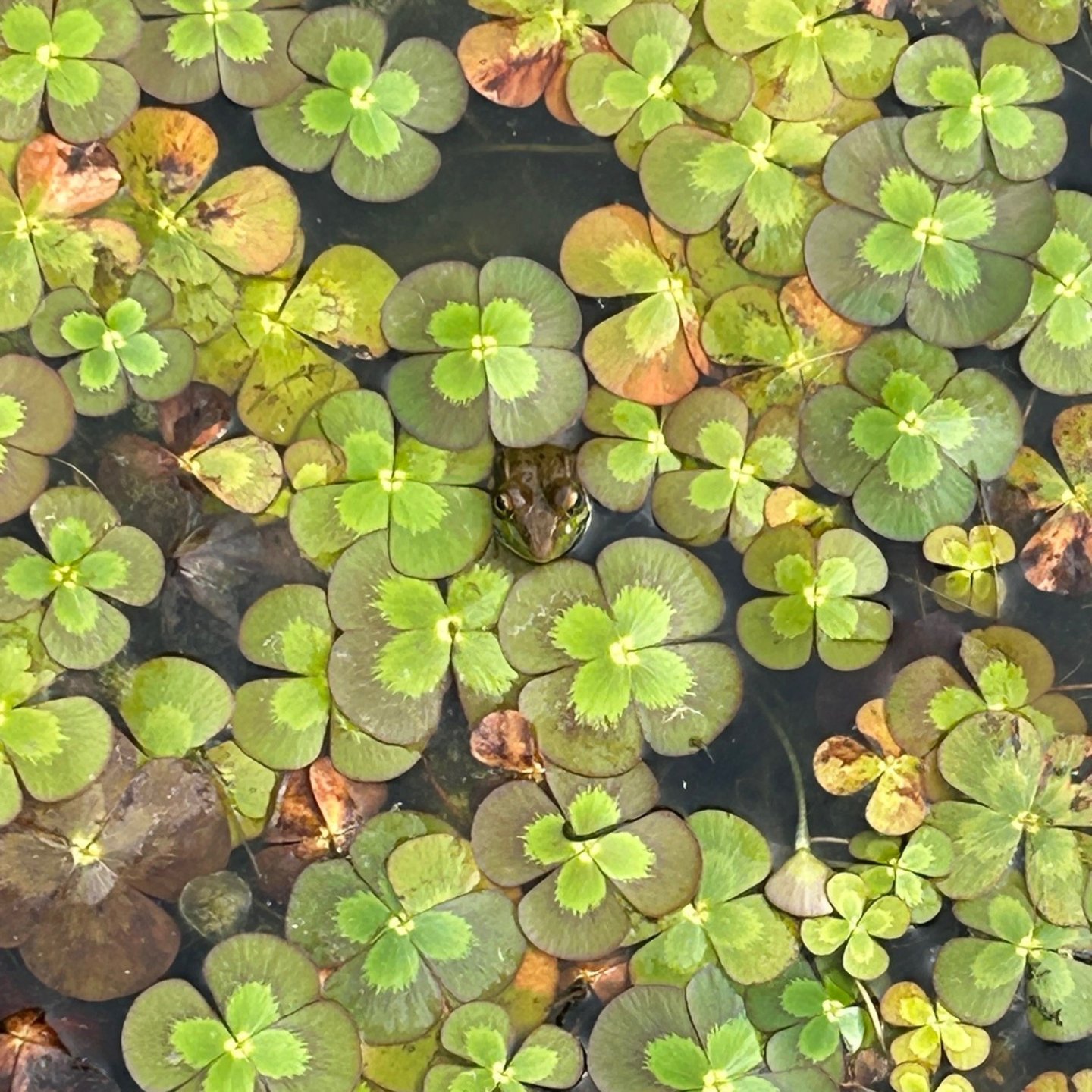
- This collection is situated in and around Lake Lena, a small wetland at the Gardens' lowest elevation. Lake Lena serves as an educational space for programs focused on Virginia's native wetlands and conservation needs. The collection, which exclusively features native biota, began its conservation work in 1999. Established trees, including numerous bald cypresses with their characteristic "knees," have thrived by the lake for over two decades. Other native trees such as sycamore, black gum, river birch, willow, and sweet gum also flourish in the area, alongside Virginia's southern wetland shrubs and wildflowers.
- Lake Lena blends native plant horticulture with habitat conservation, creating a naturalized wetland environment. Aquatic native plants like pickerelweed, fragrant water lilies, arrowhead, and sweet flag thrive in the summer humidity. The shoreline features pitcher plants, red and blue cardinal flowers, blue flag iris, and aromatic bayberries. Common wetland species such as cattails and native sedges, including Cyperus and Carex, naturalize around the lake.
- The lake also provides habitat for aquatic animals and birds. It hosts turtles, northern water snakes, native frogs, fish, and aquatic insects. Wading birds such as great blue herons, green herons, and black-crowned night herons frequent the area, while perching birds also enjoy the lake.
- The Virginia Native Tree collection is in a secluded corner of the gardens, showing the state's best native trees for home gardens. Among these are smaller native trees such as the fringe trees, known for their fragrant white flowers and dark blue fall fruits, and paw paws, which feature long leaves with a "drip tip" and unique fruit with a flavor reminiscent of apple and banana.
- Other notable trees include the hop hornbeam, which has soft, shaggy bark, and the hornbeam, known for its hard wood and fine twigs. Overcup oak is also present, with unique acorns covered by an imbricate involucre. Sweetbay magnolia, ranging in size from Massachusetts to Florida, has fragrant creamy white flowers in summer.
- The collection is located near the Hillside gazebo, a ten-minute walk from the Visitors Center, and is part of the Specimen Tree program.
Nature Traills
Explore the Young Forest and Nature Trail, located at the north end of the gardens along a scenic mulched path. These trails are a little over 0.6 miles long collectively, winding through a thriving young forest, offering nature enthusiasts a chance to observe the dynamic growth of native plant species. Enjoy a tranquil walk as you immerse yourself in the natural beauty and evolving landscape of this vibrant forest habitat.
- Discover the Fred Grove and Trail, located on the southwest side of the gardens. This serene mulch trail, totaling 0.2 miles long, offers a peaceful stroll through a beautifully maintained grove. Enjoy the tranquil surroundings and the natural beauty of this charming corner of the gardens.
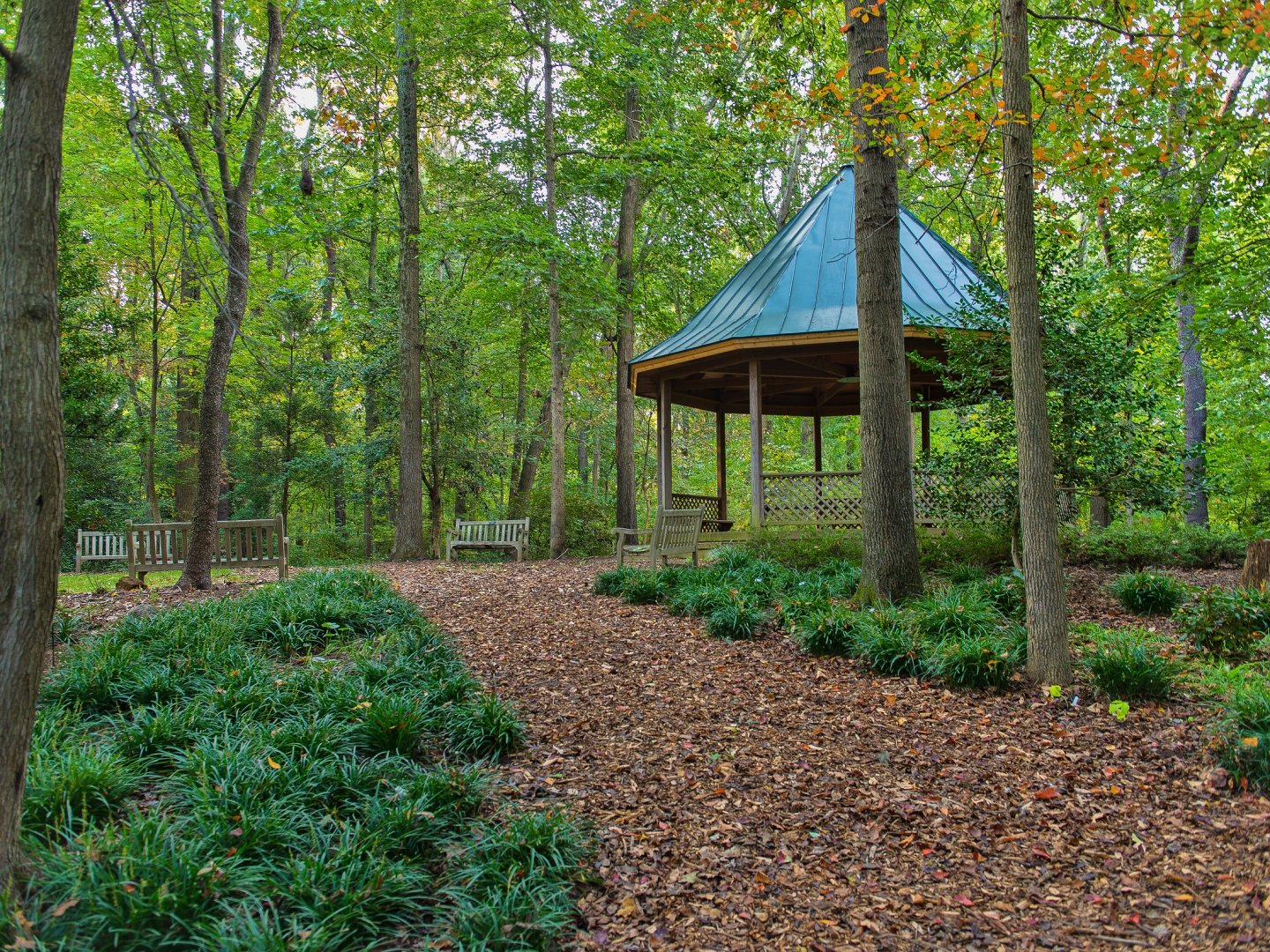
Enjoy a walk along our Paved Perimeter Trail, a mile-long pathway that borders the gardens. This scenic trail provides visitors with a delightful opportunity to explore the diverse landscapes and natural beauty outside the gardens.
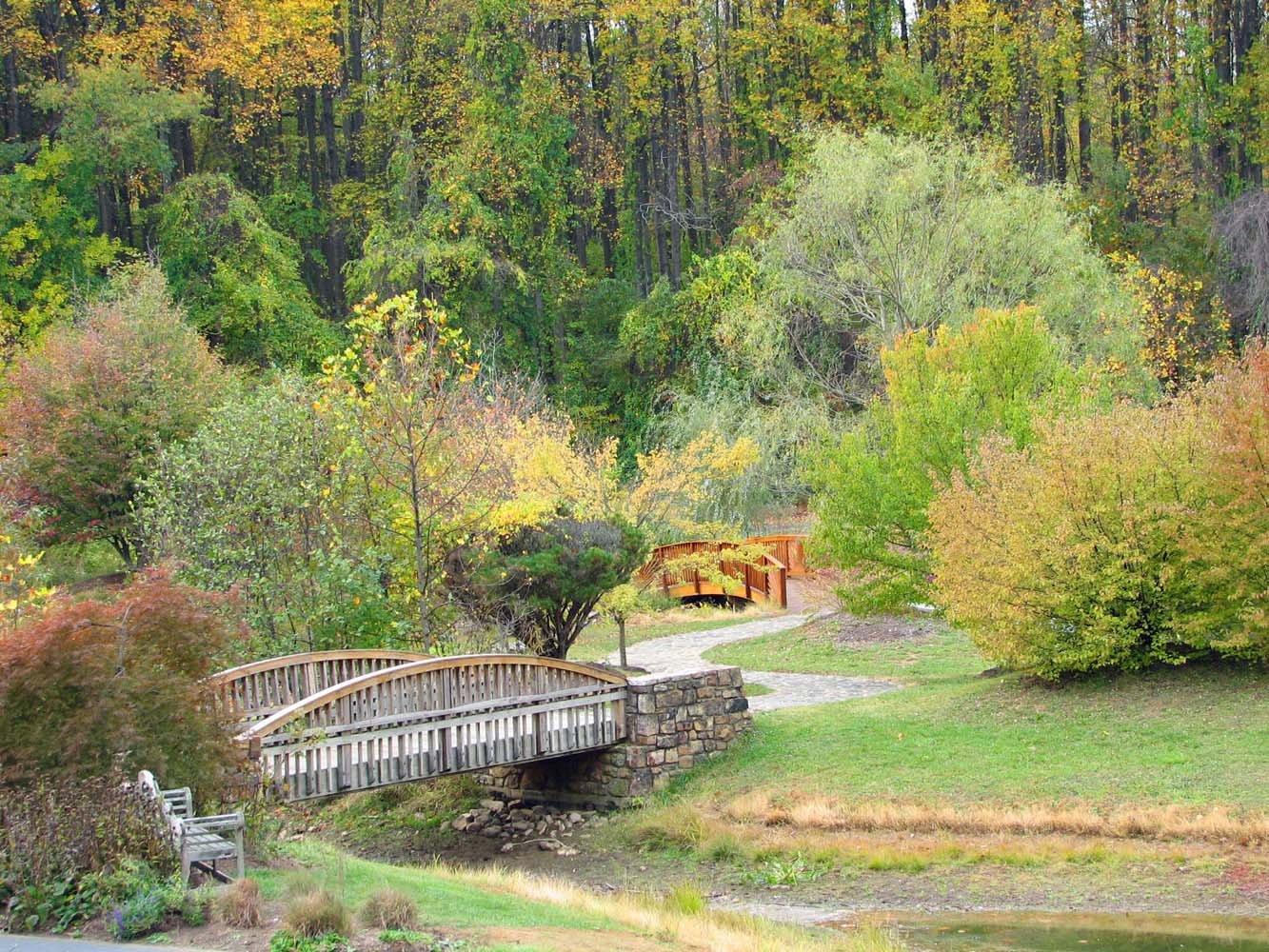
- Embark on a leisurely journey along our ADA Accessible Trail, spanning approximately 0.4 miles. This pathway ensures accessibility for all visitors, leading to the picturesque Lake Caroline Gazebo. Along the way, revel attractions, including the Great Lawn, Butterfly Garden, Korean Bell Garden, Bonsai Pavilion, and Volgenau Conservatory. Immerse yourself in the tranquility of nature while experiencing the charm and diversity of our botanical wonders.
